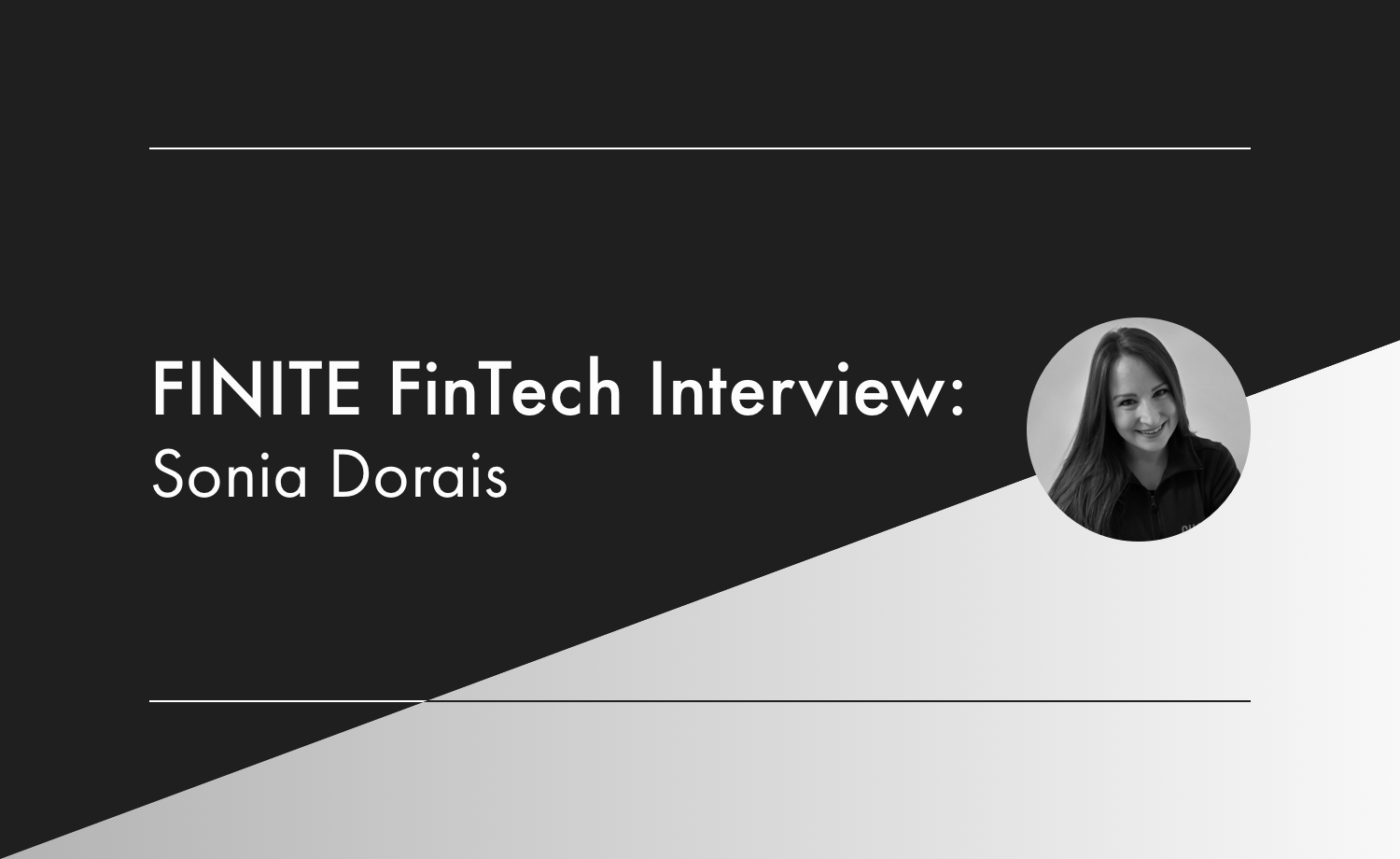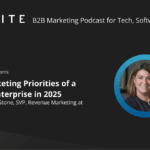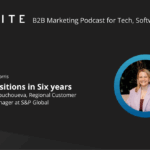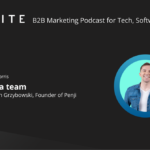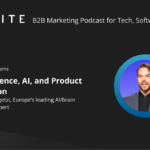Technology is an unavoidable element in any modern marketing strategy, and for good reason! MarTech is key to operating in a digital marketplace, as it allows marketers to gain consumer insights, automate their processes and reach prospects on a personal level.
In this edition of the FINITE FinTech Interview Series we talked to Sonia Dorais, Interim CEO & Head of Marketing at Chaser, and an expert in implementing MarTech!
This interview covers:
- Key, practical steps to implement new MarTech
- Different organisations require different tools to suit their needs
- Start with a clean, up-to-date database
- Educate sales, who will need to update the CRM correctly
- Pace yourself
- What makes MarTech implementation successful
- Sonia discussed feature set, ease of use, integrations, support and pricing
- It’s also important to account for sales alignment, CEO buy-in, useful data and development buy-in
- The challenges you might face in implementing MarTech
- Bad data
- Distrust of sales reps
- Product faults
FINITE: Hi Sonia! Firstly, could you tell us a bit about your past experience in B2B tech marketing at Capdesk and Compleat Software and others, as well as your current role as Interim CEO & Head of Marketing at Chaser?
Sonia:
- At Beyond I ran SAP CRM
- At Switch, I used IBM Silverpop, SugarCRM and Salesforce.
- At Compleat, I launched Marketing from scratch. I built everything from the ground up: product marketing, CRM (Salesforce), migration from Act-on to Marketo, and I implemented Market with SFDC.
- At Capdesk, I set up a marketing structure/engine, re-implemented HubSpot and optimised CRM/marketing automation.
- At Chaser, I implemented HubSpot CRM, the marketing/sales automation and the HubSpot CMS. I am currently implementing ServiceHub.
FINITE: What are some of the key, practical steps you take when implementing new MarTech?
Sonia: There is no one-size-fits-all. Every organisation has different needs and requirements, and they need different platforms to meet those. Whilst I would recommend HubSpot for some businesses, I’d recommend the combination of Marketo/Salesforce for others. It depends on the company’s business model, the size of their database, the lead generation and customer management goals.
Ideally every marketing automation system should involve integrations with the CRM (if it does not have its own CRM) and be combined with the company’s website.
Data is king!
Marketing automation is only as good as its data. If a lead is tagged incorrectly, they will be in the wrong automation flow. Most platforms are easy to set up, but successfully implementing marketing automation software requires having great data. This is the step many marketing (and sales!) professionals choose to ignore because it’s not very interesting and can be like unpicking a tangled ball of string if you have lots of legacy data.
I recommend as much as possible to set up automation workflows to clean up your data where possible. Unfortunately, not all data elements can be automated and there will usually be some form of manual work involved.
For example, with HubSpot you can automatically assign a field to a contact based on the information you have already acquired. So, if the Job Title contains “Credit Control” or “Accounts Receivable Clerk”, then set the buyer persona to “Credit Control Manager.” Using this persona, you can personalise messaging specifically for them.
Align with sales!
You’ll never have good data if Sales don’t buy into using the CRM properly. If they aren’t updating lead status, their leads will get the wrong emails etc. So I recommend involving sales in the purchase decision and collaborating with them on setting up all the definitions you plan to set for MQLs, SQLS, Lead Status etc. Also, I recommend setting up as much automation as possible for them so that they can sense the value ASAP.
Pace yourself
Don’t try to fix all the issues and problems in one setting. You can implement marketing automation in one month and implement the sales automation the following month. At Chaser, we are currently implementing ServiceHub now that we know everything else is working well. Rushing can only cause more issues down the line that are harder to fix when there is more data flowing in and out of the system.
FINITE: Given your experience, what makes MarTech implementation successful?
Sonia: With any software implementation you need to start with a set of goals, requirements and objectives. Once you’ve done that you can select the tools you need.
I recommend the following to choose your MA solution:
Feature set
Most automation platforms have a similar set of tools such as automated programs, website visitor tracking, lead scoring, etc. Look for a solution that meets your requirements, but be sure that you aren’t paying for features you don’t necessarily need
Ease of use
Usability is a critical selection factor. I like the workflow UI of Marketo as you can see the entire workflow in a page rather than say, the tree workflows in HubSpot. You need to pick what you are going to be most comfortable with.
Integrations
Most marketing automation platforms can integrate with a variety of 3rd party systems such as Salesforce, GoToWebinar, social, etc. Consider what integrations are critical to your marketing and sales teams and select a solution that has the tightest integration with those systems.
Support/Onboarding
Make sure not to skimp on the support and onboarding costs. I would take and retake the training, and do so with any new implementations. These products evolve every month, there is always something new to learn. Also, if you set it up incorrectly from the beginning you will have problems that could last a lifetime
Pricing
Of course price matters. It was the driving factor to us choosing Hubspot at Chaser. They have a good partner programme where you can get a discount for the first 12 months, which is worth looking into.
After you’ve selected the platform, I also think the following is important
- Sales alignment – make sure they plan to use it and know the benefits.
- CEO buy in – You will need CEO buy in to free up the time of the other staff involved, including dev.
- Data-driven organisation – having good data as mentioned above.
- Development buy-in for integrations.
Lastly, I recommend you purchase only what you need and add on more features as you grow. Start with the smallest package and when you hit the limitations, then purchase the add-ons or extra features.
FINITE: What is the biggest challenge you have come across so far in implementing MarTech at the companies you have worked for?
Sonia:
Bad data
I’ve definitely had bad previous data. I had an implementation that involved 200+ spreadsheets of leads in people’s folders. I updated them all manually, got the information right, imported etc. Then when I merged the old CRM (Capsule) data into HubSpot, bad data from the Capsule CRM that had never been updated wrote over the work I had done!
Sales buy-in
I’ve not had this problem in 15 years but I know other marketers have. Sales have to trust in the data. Sometimes they don’t believe what they see.
Product Faults
Some products have issues. Hubspot has no audit trail, so I’ve had a situation where a sales person was deleting deals to improve his conversion rate and we only realised because I had exported the pipeline for a report to the board.
FINITE: Has Covid-19 impacted your use of MarTech? If so, how?
Sonia: No, as I’ve always believed in automation and I’m in the business of automation. Every software company I’ve worked for in the past 20 years has offered some form of automation to replace manual work in one way or another.
FINITE: Thanks so much for sharing your valuable advice on MarTech implementation, Sonia! You’ve given us some really useful key takeaways.
To read the last edition of the FINITE FinTech Interview Series and to learn how to launch products into new B2B markets, click here!
